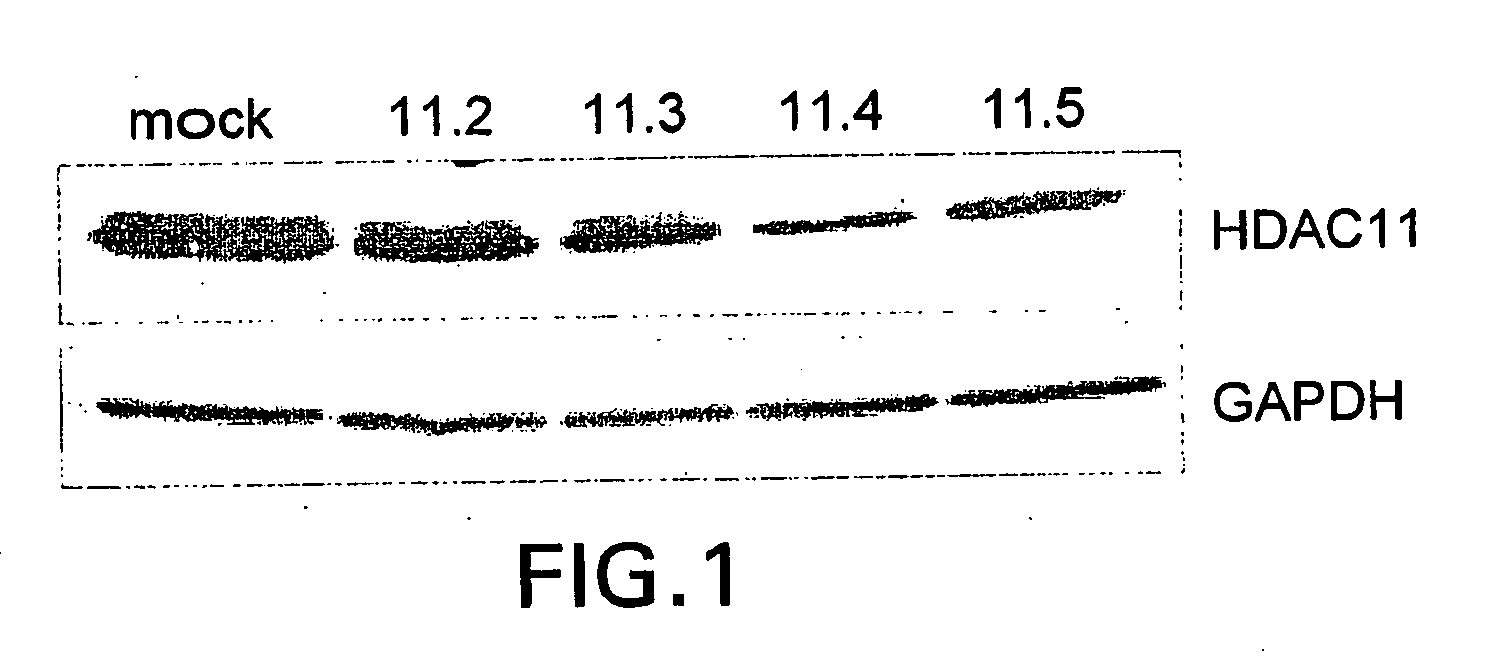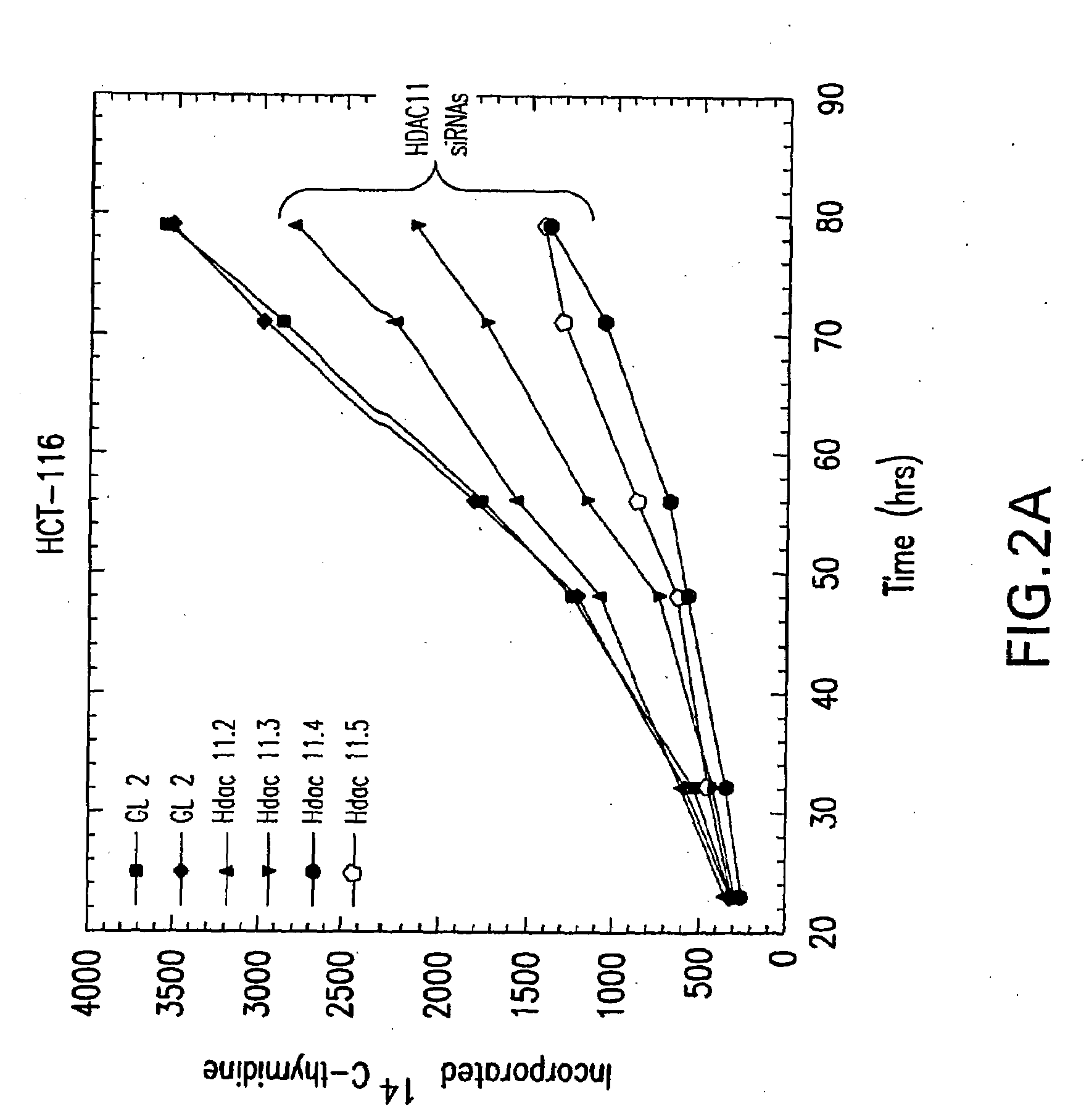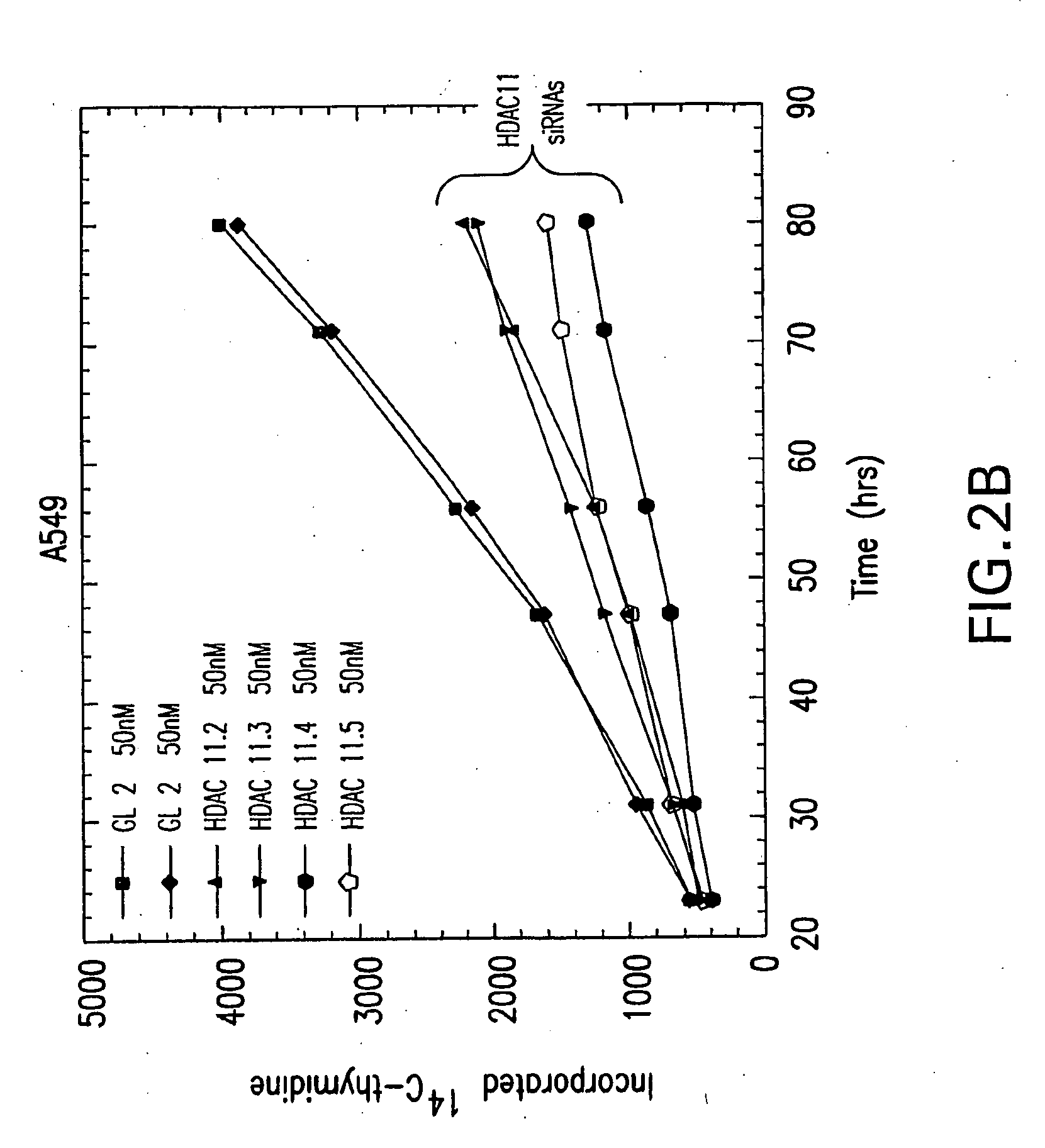Inhibitors of mammalian hdac 11 useful for treating hdac 11 mediated disorders
a technology of hdac 11 and inhibitors, applied in the field of hdac 11, can solve the problems of adversely affecting the inhibitory action of hdac 11, lack of identification of specific hdac proteins and their association with specific anti-proliferative diseases, and inability to understand the pharmacology of hdaci molecules and their interaction with targets, etc., and achieve the effect of modulating hdac bioactivity
- Summary
- Abstract
- Description
- Claims
- Application Information
AI Technical Summary
Benefits of technology
Problems solved by technology
Method used
Image
Examples
example 1
Materials and Methods
[0172]siRNA Design.
[0173]Sequences of the type AA(N19)dTdT (N, any nucleotide) from the targeted mRNA were designed based on the rules suggested by Elbashir et al. (Genes Dev, 2001) and purchased from Dharmacon Research or Oligo Engine as annealed, deprotected, double-stranded 21mers. The N19 sequences targeting HDAC11 mRNA corresponded to the following nucleotide positions relative to the Genbank accession number NM—024827: HDAC11.2 nt. 513-531; HDAC11.3 nt. 582600; HDAC11.4 nt. 1032-1050; HDAC11.5 nt. 1344-1362.
[0174]Representative dsRNA constructs for specifically silencing human HDAC 11 via RNA interference include:
11.21AAGUUUCUGU UUGAGCGUGU G(SEQ ID NO: 3)CAAAGACA AACUCGCACA CAA(SEQ ID NO: 7)11.31AAUGGGCAUG AGCGAGACUU AAC(SEQ ID NO: 4)ACCCGUAC UCGCUCUGAA UUGAA(SEQ ID NO: 8)11.41AACUCAGACA CACCGCUGCU U(SEQ ID NO: 5)GAGUCUGU GUGGCGACGA AAA(SEQ ID NO: 9)11.51AACUGAGAAU UGGAGAGGAC A(SEQ ID NO: 6)GACUCUUA ACCUCUCCUG UAA(SEQ ID NO: 10)
[0175]Construct 11.2 targets...
PUM
| Property | Measurement | Unit |
|---|---|---|
| volumes | aaaaa | aaaaa |
| volume | aaaaa | aaaaa |
| physical interaction | aaaaa | aaaaa |
Abstract
Description
Claims
Application Information
 Login to View More
Login to View More - R&D
- Intellectual Property
- Life Sciences
- Materials
- Tech Scout
- Unparalleled Data Quality
- Higher Quality Content
- 60% Fewer Hallucinations
Browse by: Latest US Patents, China's latest patents, Technical Efficacy Thesaurus, Application Domain, Technology Topic, Popular Technical Reports.
© 2025 PatSnap. All rights reserved.Legal|Privacy policy|Modern Slavery Act Transparency Statement|Sitemap|About US| Contact US: help@patsnap.com



